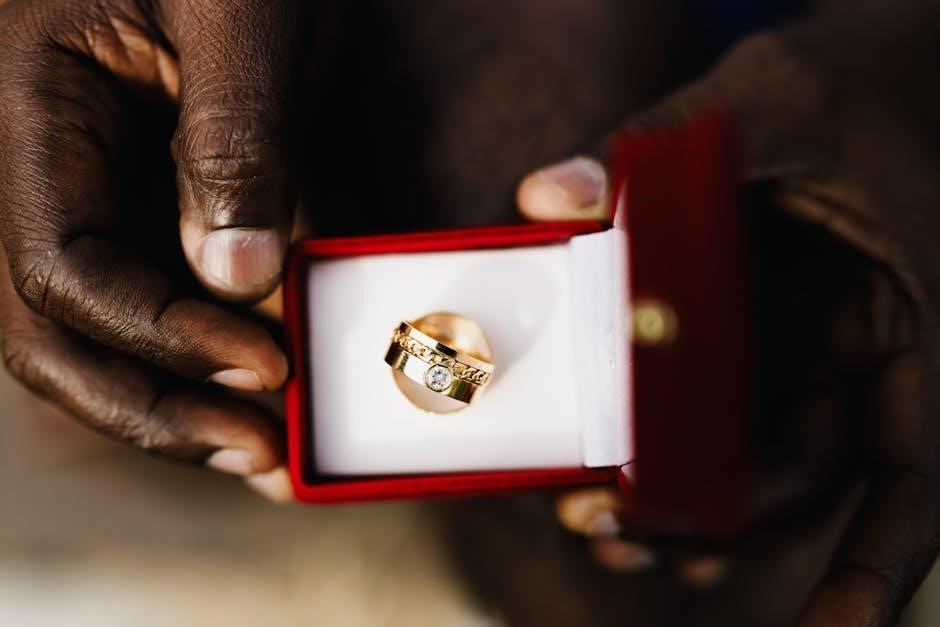Black Diamond Headlight Instructions: A Comprehensive Guide
This guide provides comprehensive instructions for Black Diamond headlamps, essential gear for outdoor enthusiasts․ We’ll cover everything from identifying your model to troubleshooting common issues, ensuring optimal performance and longevity․ Maximize your headlamp’s potential and enjoy safe, well-lit adventures․
Overview of Black Diamond Headlamp Models
Black Diamond Equipment offers a diverse range of headlamp models designed for various activities, from casual camping to intense mountaineering․ Their headlamps are known for their durability, innovative features, and reliable performance in demanding environments․ Key models include the Cosmo, Spot, Storm, and ReVolt, each catering to specific needs and preferences․
The Cosmo is a lightweight and compact option, ideal for general use and everyday tasks․ The Spot offers a balance of power and features, suitable for hiking and backpacking․ The Storm provides enhanced weather resistance, making it perfect for wet and challenging conditions․ The ReVolt stands out with its dual-fuel capability, allowing use of alkaline batteries or rechargeable lithium-ion batteries․
Each model incorporates different light modes, including proximity, distance, dimming, strobe, and red night vision, providing versatility for various situations․ Black Diamond continuously innovates, integrating features like brightness memory, digital lock mode, and battery meter displays to enhance user experience and convenience․ Understanding the specific features of each model is crucial for selecting the right headlamp for your needs․
Identifying Your Specific Model
Identifying your specific Black Diamond headlamp model is crucial for accessing the correct instructions and understanding its unique features․ The model name is typically printed on the headlamp itself, often located on the front of the housing or on the battery compartment․ Look for a distinct name like “Cosmo,” “Spot,” “Storm,” or “ReVolt,” followed by a number indicating the maximum lumen output․
If the printed label is worn or difficult to read, check the original packaging or any accompanying documentation․ The user manual usually contains the model name and a product identification number․ You can also visit the Black Diamond Equipment website and browse their headlamp catalog․ Compare the physical appearance, features, and specifications of your headlamp to the images and descriptions provided on the website․
Pay close attention to details such as the number of buttons, the design of the headband, and the presence of specific features like a red night vision mode or a digital lock․ Once you have identified your model, you can download the corresponding user manual from the Black Diamond website or refer to online resources for detailed instructions on operation, maintenance, and troubleshooting․ Accurate identification ensures you receive the most relevant information for your headlamp․
Battery Installation and Replacement
Proper battery installation is essential for optimal headlamp performance․ To install or replace batteries, locate the battery compartment, usually at the rear of the headlamp housing․ Most Black Diamond headlamps feature a latch or clip that secures the compartment․ Gently release the latch to open the compartment․

Note the battery orientation markings inside the compartment (+ and — symbols)․ Insert the batteries according to these markings, ensuring the positive and negative ends align correctly․ Using the wrong orientation can damage the headlamp․

For models that use AAA batteries, ensure you are using fresh, high-quality alkaline batteries for the best performance․ Some models are also compatible with rechargeable lithium-ion batteries, offering an eco-friendly alternative․ When using rechargeable batteries, follow the manufacturer’s instructions for charging․

Once the batteries are correctly installed, securely close the battery compartment and ensure the latch is properly engaged․ A loose or improperly closed compartment can allow moisture to enter, potentially damaging the headlamp’s electronics․ Regularly inspect the battery compartment for corrosion or damage․ If you notice any issues, clean the contacts with a cotton swab and replace the batteries as needed․ Always dispose of used batteries responsibly according to local regulations․
Basic Operation: Powering On/Off and Mode Selection
Operating your Black Diamond headlamp is generally straightforward․ Most models feature a single or dual-button interface for controlling power and light modes․ To power on the headlamp, typically a single press of the power button is required․ A second press often cycles through different brightness levels within the default mode․
To turn the headlamp off, a longer press of the power button (usually around two seconds) is generally necessary․ This prevents accidental shut-offs during use․ Familiarize yourself with the specific button configuration of your model, as it may vary slightly․
Mode selection usually involves additional button presses or holding the button down․ Common modes include proximity (flood) mode for close-range tasks, distance (spot) mode for focused illumination, and dimming for adjusting brightness․ Some models have a separate button for accessing specialized modes like strobe or red night vision․
Experiment with the different button combinations to understand how to switch between modes efficiently․ Many headlamps also feature a “Brightness Memory” function, which remembers the last used brightness level and activates it when the headlamp is powered on again․ Refer to your headlamp’s manual for detailed instructions on mode selection and any unique features specific to your model․ Regular practice will ensure you can operate your headlamp quickly and effectively in any situation․
Understanding Different Light Modes: Proximity, Distance, Dimming, Strobe, Red Night Vision
Black Diamond headlamps offer a variety of light modes to suit different needs․ Proximity mode provides a wide, diffused beam ideal for close-range tasks like reading or working in camp․ This mode conserves battery life and reduces glare․ Distance mode focuses the light into a narrow, powerful beam for long-range visibility during hiking or searching․

Dimming allows you to adjust the brightness level in either proximity or distance mode, further conserving battery and adapting to varying light conditions․ Strobe mode emits a rapid flashing light, useful for signaling emergencies or increasing visibility in low-light situations․
Red night vision utilizes a red LED, which preserves your eyes’ natural night vision by not constricting pupils like white light․ This mode is essential for stargazing, map reading, or any activity where maintaining night vision is crucial․ Some red night vision modes also offer dimming and strobe functions․
Understanding the purpose and application of each light mode will significantly enhance your headlamp’s versatility․ Experiment with the different modes in various environments to determine the optimal settings for your specific activities․ Properly utilizing these modes will maximize battery life and improve your overall experience in the outdoors․ Always consult your headlamp’s manual for specific instructions on accessing and using each mode․
Using the Digital Lock Mode
The digital lock mode on Black Diamond headlamps is a crucial feature preventing accidental battery drain․ Imagine packing your bag for a multi-day trek, only to discover your headlamp battery is dead upon arrival․ The digital lock mode safeguards against this scenario by disabling the power button, preventing the headlamp from turning on unintentionally while stored in your pack or pocket․
To activate the digital lock, typically you’ll need to press and hold the power button for several seconds until the light flashes, indicating that the lock is engaged․ The exact procedure may vary slightly depending on your specific model, so always refer to your user manual for precise instructions․
Deactivating the lock usually involves repeating the same process – pressing and holding the power button until the light flashes again, signaling that the headlamp is unlocked and ready for use․ This simple yet effective feature ensures that your headlamp is always ready when you need it, providing peace of mind on any adventure․
Always remember to engage the digital lock before storing your headlamp to conserve battery power and prevent unexpected illumination․ Regular use of this feature will significantly extend your battery life and ensure reliable performance when you need it most․
Battery Meter and Power Management
Black Diamond headlamps often feature an integrated battery meter, a valuable tool for monitoring remaining power levels․ The battery meter typically displays the percentage of power remaining through a series of LED indicators․ Understanding this display allows you to proactively manage your power consumption during your activities․
Effective power management is essential for extending battery life․ Conserving energy involves using lower light modes when bright illumination isn’t necessary․ The proximity mode, for example, is ideal for tasks around camp, while the distance mode is better suited for navigating trails․
Dimming functionality further allows you to fine-tune the brightness to match your specific needs, reducing power drain․ Strobe mode, though useful for emergencies, consumes significant power and should be used sparingly․
Consider carrying spare batteries or a portable charger on longer trips․ Some models offer dual-fuel compatibility, allowing you to use either alkaline batteries or rechargeable lithium-ion batteries, providing greater flexibility․ By carefully monitoring the battery meter and adjusting your usage accordingly, you can ensure your headlamp provides reliable illumination throughout your adventure․ Remember to check the meter regularly to avoid unexpected power loss․
Dual-Fuel Compatibility (Alkaline vs․ Rechargeable Lithium-Ion)
Many Black Diamond headlamp models offer dual-fuel compatibility, providing the flexibility to use either alkaline batteries or rechargeable lithium-ion batteries․ This feature is particularly advantageous for users who engage in a variety of activities with varying power needs and access to charging facilities․ Alkaline batteries are readily available and offer a reliable power source, making them ideal for situations where recharging isn’t feasible․ However, they are not environmentally friendly and have a limited lifespan compared to rechargeable options․
Rechargeable lithium-ion batteries, such as the Black Diamond BD 1500, offer a more sustainable and cost-effective solution in the long run․ These batteries can be recharged hundreds of times, reducing waste and saving money․ They also tend to provide more consistent performance and can often deliver higher output than alkaline batteries․
When using rechargeable batteries, it’s important to follow the manufacturer’s instructions for charging and storage․ Overcharging or improper storage can damage the battery and reduce its lifespan․ Consider the advantages and disadvantages of each battery type to determine the best option for your specific needs․
Care and Maintenance: Waterproofing and Storage
Proper care and maintenance are crucial for extending the life of your Black Diamond headlamp and ensuring its reliable performance․ Many models are designed with waterproofing features, but it’s essential to understand the limits of this protection․ While some headlamps can withstand submersion, others are only splash-resistant․ Always check the IP rating of your specific model to determine its level of water resistance․
After exposure to water or moisture, thoroughly dry your headlamp before storing it․ Remove the batteries to prevent corrosion and potential damage; Clean the lens with a soft, dry cloth to maintain optimal light output․ Avoid using abrasive cleaners or solvents, as these can scratch or damage the lens․
When storing your headlamp, choose a cool, dry place away from direct sunlight and extreme temperatures․ This will help prevent battery degradation and damage to the plastic components․ Consider storing your headlamp in a protective case or bag to shield it from dust and impacts․ Regularly inspect your headlamp for any signs of damage, such as cracks, frayed wires, or loose connections․ Addressing these issues promptly can prevent more serious problems down the road․
Troubleshooting Common Issues
Even with proper care, you may encounter issues with your Black Diamond headlamp․ A common problem is the headlamp not turning on․ First, ensure the batteries are correctly installed and have sufficient charge․ If using rechargeable batteries, try fully charging them․ If the headlamp still doesn’t power on, clean the battery contacts with a dry cloth to remove any corrosion․
Another frequent issue is dim or flickering light․ This usually indicates low battery power․ Replace the batteries or recharge them if applicable․ If the problem persists, check for any obstructions on the lens that may be reducing light output․ Clean the lens carefully with a soft cloth․
If your headlamp is experiencing issues with mode selection or the digital lock, try resetting it․ The reset procedure varies by model, so consult your user manual․ For water damage, immediately remove the batteries and allow the headlamp to dry completely before attempting to use it again․ If these steps don’t resolve the issue, contact Black Diamond’s customer support for further assistance or consider checking the warranty claim submission process․ Remember to always prioritize safety when using your headlamp․
